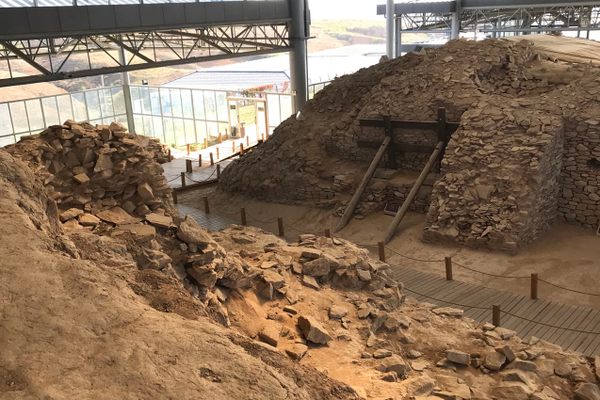About
When it was discovered in 1952 during an excavation of the Temple of Inscriptions in the ruined Maya city of Palenque (in the modern-day Mexican state of Chiapas), this intricate jade death mask had been lying in a darkened tomb chamber for over a thousand years, covering a skull. Inscriptions on the walls indicated that the skull belonged to none other than the Maya ajaw (ruler or king) K'inich Janaab' Pakal, known today as Pakal the Great.
For much of his long 68-year reign during the 7th century, Pakal (often called "Sun Shield" before his name was name was securely deciphered) was the most powerful person in the entire Americas. But despite the lofty status he held in the twilight of his life, he began his rule as an unlikely and underestimated leader.
Pakal ascended the throne at only 12 years old in a city devastated by war with the rival Maya state of Kaan. The warring period with the kingdom Kaan had twice led to catastrophic sieges of Palenque, the massacre of its citizens, and the killing of its former ruler. The young king inherited a kingdom in a state of anarchy, profoundly scarred by war and its recent humiliating military defeat. Most of its stately buildings had been reduced to rubble and a large part of its population lay dead, butchered by the arrows, spears, and obsidian-bladed maces of the ferocious warriors of Kaan. The once-abundant crops of maize had been burned to the ground and the threat of famine loomed.
Given such adverse circumstances and grave responsibilities at such a young age, it is a wonder that the boy king did not have a nervous breakdown. Instead, all of this proved formative for the character of Pakal. His mother, Lady Sak K'uk, served as regent for three years while the young king matured and learned the ropes of Maya leadership. And though he was faced with critics from the outset, the young Pakal proved himself a worthy ruler.
Word of this ambitious young ruler and his city rising from the ashes began to spread across the Maya world, and once again the kingdom of Kaan sought to destroy it, sending out an enormous army to crush Palenque into the ground forever. But when spies got word of the enemy's plans and reported them to the king, Pakal raised an army and attacked the Kaan kingdom outposts. The battle was fierce but the army of Palenque was victorious and returned home with several captured enemy lords. Pakal ordered these captives to be sacrificed to the god K'awiil—a deity of serpents, lightning, and maize—as a public display of his power and a warning to his enemies.
This military victory gave the rising kingdom some respite from fighting, as its enemies were ever afterward wary of declaring war on the king. His reign was far from free of conflict, but the city would never again be directly attacked or be besieged during the lifetime of Pakal. The king lived to a remarkable 80 years of age and ruled for 68 of those years, one of the longest reigns in human history.
Over a thousand years later, this striking funerary mask was found inside the sarcophagus of the Pakal the Great during the excavation of a tunnel under the Temple of Inscriptions pyramid at Palenque. It is now on display inside a superb recreation of Pakal's tomb at the National Museum of Anthropology in Mexico City.
Related Tags
Know Before You Go
You can find the death mask and replica tomb in the National Museum of Anthropology's Mayan hall. The museum is open from 9 a.m. to 7 p.m. every day except Thursdays, when it is closed to the public. The entrance fee is 51 pesos but if you are a Mexican national or a foreign resident of the country you may visit for free on Sundays.
NEW - Yucatan: Astronomy, Pyramids & Mayan Legends
Mayan legends, ancient craters, lost cities, and stunning constellations.
Book NowCommunity Contributors
Added By
Published
March 15, 2019
































